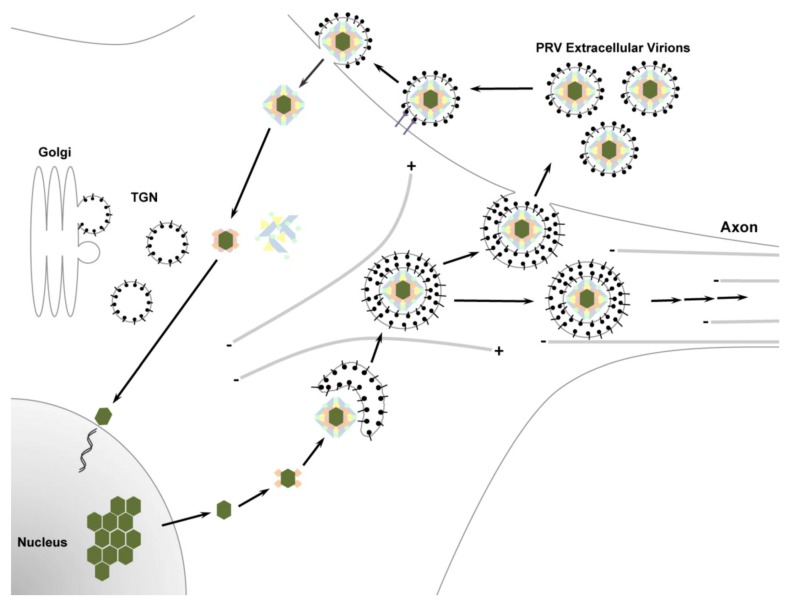Figure 2.
The pseudorabies virus (PRV) replication cycle. Following virion attachment and entry, viral capsids and tegument proteins are released into the cytoplasm. Many of the tegument proteins previously contained within the virion are released into the cytoplasm. Viral capsids and a specific subset of tegument proteins are trafficked towards the nucleus, where the viral genome is deposited and replicated. Capsids containing newly replicated viral genomes are released from the nucleus into the cytoplasm, where they further mature by acquiring viral and host tegument proteins. Final maturation occurs by envelopment of viral particles into vesicles derived from the trans-Golgi network (TGN) that contain viral and host membrane proteins. This process, known as secondary envelopment, results in a mature virion that is contained within a transport vesicle. Enveloped virions are trafficked towards sites of egress along the cell surface. In neurons, enveloped virions are sorted into axons and transported long distances along microtubules towards distal egress sites. At the target membrane, the transport vesicle and plasma membrane fuse, releasing a mature, enveloped PRV virion from the cell.

